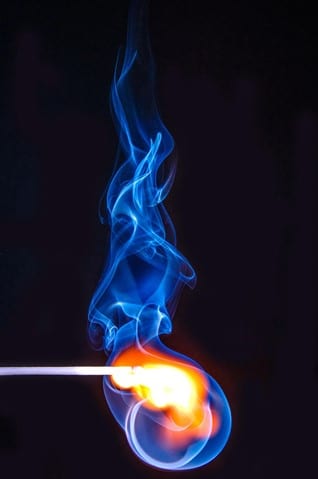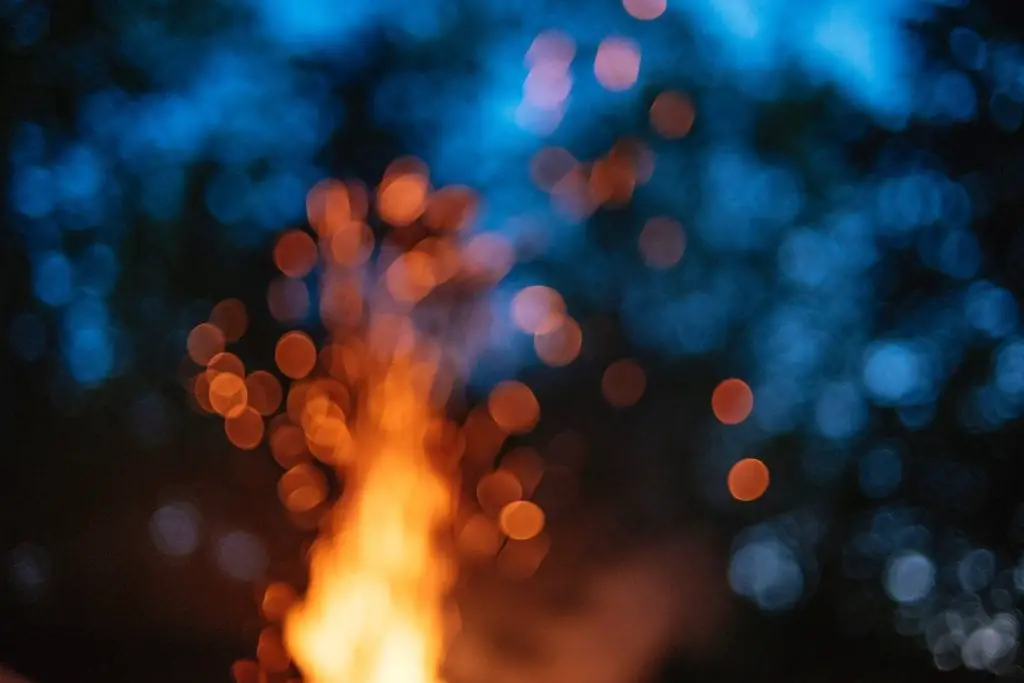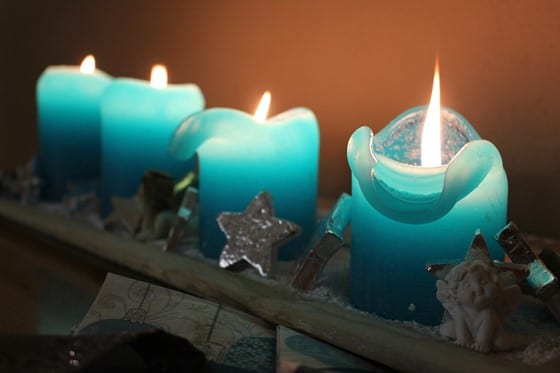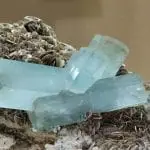
When we think of things that are blue, fire surely does come to mind. Often, we do not associate fire with the color blue. In various cultures, fire is considered to be yellow and it appears that way in cultural representations. However, once inside the kitchen, gas fire does appear to be blue. It is usually the kids with their easily aroused curiosity who put forward questions like these. Once you’re through this article, you’ll be able to explain, through and through, why gas fire appears to be blue.
The science behind it
Before we come to answer the question of why gas fire appear to be blue, we must first understand some scientific terms. Combustion is one such term which becomes important when we talk about the concept of fire. Combustion is a chemical reaction which involves a fuel and an oxidizer. The fuel can be primary, found naturally, or secondary, made artificially. Natural fuels include wood, petroleum, etc. On the other hand, some common artificial fuels are kerosene, LPG, etc. When a fuel like a natural gas, comes in contact with an oxidizer, a substance which provides oxygen to the whole reaction, a chemical reaction occurs termed as combustion. The reaction gives out heat as well as emits light. The heat might or might not give out flames as that depends upon the substances involved in the reaction.
You must be wondering why we are bothering with these scientific terms and their definitions. You don’t have to worry – this article will serve as a double-edged sword. It will provide accurate scientific information and explain it in a simple manner too! Combustion is the process which is behind your gas system and the flame. The blue-colored flame of your gas stove depends upon combustion.
The type of flame you get is determined by something called ‘fuel to air (mixture) ratio’. In the process of combustion, this ratio determines whether the flame you get is yellow or blue. You can choose any fuel but they all require to be in a low ratio compared to the air mixture or the oxidizer. In other words, you would only get a blue flame, if there is enough oxygen in the process. If the fuel is in excess, it is said that the ratio is fuel rich and you would get a yellow flame. The converse is when there is enough air mixture and the resulting flame is thus blue. However, that is not the only reason behind the color of a flame being blue.
The type of combustion
As we mentioned earlier, the color of a flame also depends upon the process of combustion. Precisely, it depends upon the type of combustion which occurs. If it’s incomplete or partial combustion, then the flame is yellow. Partial combustion of fuel means that there is something wrong with the setup and not enough oxygen is being supplied. In partial combustion, the extra product is carbon monoxide. This is very important to note because carbon monoxide is poisonous. If you see a yellow flame with your gas stove setup, be sure to get the problem checked out as there could be the threat of carbon monoxide poisoning.
All in all, incomplete combustion is usually due to a problem in the setup and its root cause is the lack of oxygen. Again, this ties back to the fuel to air ratio mentioned before. On the other hand, complete combustion refers to the reaction extracting the complete energy of the fuel used. There is little to no production of carbon monoxide. To be precise, the incomplete combustion does happen but its products then react with the secondary air to give out the normal products. For further clarification, we can look at some reactions of complete and incomplete combustion.
Incomplete combustion: 4CH4 + 5O2 = 2CO + 8H2O + 2C
Complete combustion: 2C8H18 + 25O2 = 18CO2 + 16H2O
The fuel used in those reaction is different but we can see that in complete combustion, there is no production of carbon monoxide. However, these are oversimplified reactions. Carbon monoxide is produced even during complete combustion but it is soon converted into carbon-di-oxide and water.
Let us not get too much into these chemical reactions. The point is – the flame is blue because the combustion is complete and not partial. And this combustion excites the particles and ionizes them. Yet, there is another condition on which the color of the flame on your gas stove depends.
The fuel also has to be hydrocarbon-based. It is only hydrocarbon flames which go through the reaction of carbon monoxide and hydrogen. This is the base reaction which leads to the color blue of the flame. Without a hydrocarbon based fuel, the reaction is not possible at all. More or less, almost all fuels are hydrocarbon-based with some exceptions. The emission of blue light is the characteristic feature of all carbon and hydrocarbon based fuels. It is a technical reason behind the color of the flame.

Why some substances like wood when burnt have a yellow flame?
This brings us to the question as to why some substances like wood, when they are burning, produce yellow flame. This is totally baffling as there is enough oxygen available in the air as wood is usually burnt in the open. The reason behind this can be traced to the soot particles that are produced when wood burns. These particles’ incandescence leads to yellow-red flames.
In other words, the high temperature of these fine particles causes them to emit yellow light. Whenever there are impurities in the fire, these can affect the color of it. Moreover, the process can only be fine-tuned in controlled setups like gas-stoves. In these setups, the combustion process is tuned to save gas, energy and by extension, money. Out in the open world, there are a lot of factors which come into play. Thus, most of the fires that you see out in the open is yellow-reddish.
Moreover, different types of substances produce different types of flames. For instance, magnesium produces white flames. Thus, you cannot be sure of the color you’re going to get whenever you’re burning something outside. And you cannot look into the reason behind the kind of flame you’re getting because of the sheer number of factors at play. The question of blue colored flames of gas stoves is a frequently asked one and for good reason. It has a significance to it which we’re going to mention next.
Importance of recognizing a difference between blue and yellow flames
The question around which this article is based is not a meaningless one. It is significant especially in domestic setups. As we have mentioned before, a blue flame is the result of complete combustion. That means there is no carbon monoxide as a byproduct and thus it is safe. When there is a yellow flame, it indicates that there is something wrong with your gas stove setup and it becomes a safety hazard. That is the importance of recognizing the difference between a yellow and blue flame. More often than not, a gas stove is located inside the house, mostly the kitchen.
When carbon monoxide is produced and there is no ventilation because of the stove being inside, it leads to health risks and can even be fatal. Most carbon monoxide poisonings happen this way. It is these faulty stoves and other heat-based appliances such as geysers which cause these accidents. Get your appliance checked out if it has a yellow flame or any other symptoms. Most likely, it will be a minor problem such as your burner being clogged but getting it checked out is the most important thing. Most people are not able to spot the difference between the flames and cannot recognize the problem.
If you’re still unsure whether there is a leak of carbon monoxide from your gas appliance, be sure to check in with how you’re feeling. Carbon monoxide tends to cause headaches, nausea, dizziness and breathlessness. You might even collapse and lose consciousness if exposed to large amounts of it. However, there would be clear signs of an appliance malfunctioning like soot coming out it, smoke, change in the color of flame, etc.

The blue aesthetic – which is also safe
We often see scenes in movies where the actor stares into the blue flame, deep in thought. Fire is a thing of beauty and there is not a doubt about that. We are surrounded by the wonders of science and the aesthetics of nature that we usually do not notice. When was the last time you looked directly into the burning fire? We don’t stop to look around and that is why we do not ask questions like these. Questions like why does gas fire appear to be blue? These simple questions can lead to profound answers and some of the information can even save your life. The aesthetic blue of a gas stove flame – complete combustion with enough oxygen and a hydrocarbon-based fuel. And more importantly, a sign of safety.



